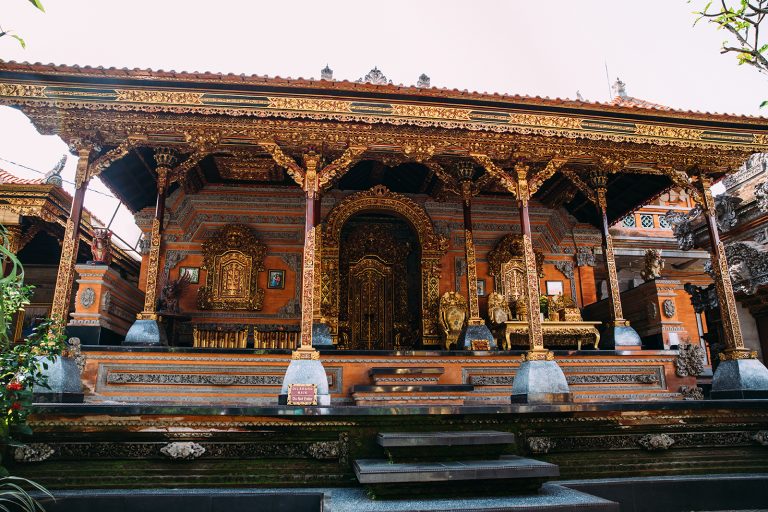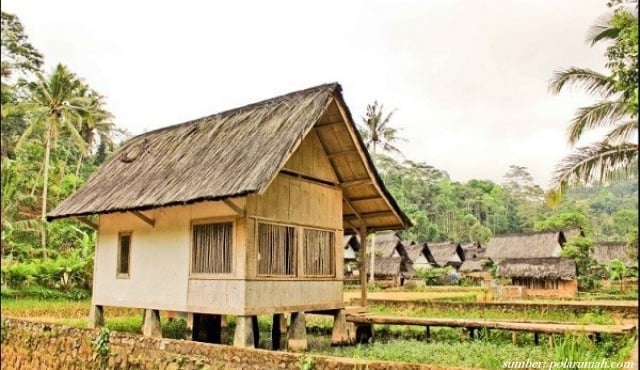
The Traditional Rumah Bale Meten: An Indonesian Cultural Heritage
Indonesia is a nation rich in cultural diversity, with each region boasting unique architectural styles that reflect their history, environment, and social values. Among these traditional structures, Rumah Bale Meten stands out as a significant cultural artifact, representing the heritage of the local community. This traditional house embodies not only architectural ingenuity but also the spiritual and social essence of its people. As a living symbol of cultural identity, Rumah Bale Meten offers insight into indigenous construction techniques, artistic expression, and community life. Understanding this traditional house provides a deeper appreciation of Indonesia’s diverse cultural landscape and the importance of preserving such heritage for future generations.
Architectural Features of Rumah Bale Meten: Design and Structure
Rumah Bale Meten is characterized by its distinctive open-sided design, which allows for natural ventilation and a harmonious connection with the surrounding environment. The structure typically features a high, thatched roof made from natural materials such as alang-alang or palm leaves, supported by wooden beams and columns. The house is usually elevated on stilts, which helps protect it from flooding and pests while providing a cooling airflow beneath the floor. The overall form is rectangular, with a large, open central space that serves as the main gathering area. The design emphasizes simplicity, functionality, and adaptability to local climatic conditions, reflecting a deep understanding of environmental sustainability.
The supporting framework of Rumah Bale Meten often employs traditional woodworking techniques, with joints and carvings that showcase skilled craftsmanship. The walls are generally minimal or absent, emphasizing openness and accessibility, which fosters communal interaction. The roof’s steep pitch not only aids in rain runoff but also symbolizes the cultural importance of shelter and protection. The structure’s modular design allows for easy expansion or alteration, accommodating the changing needs of the community. Its open layout and prominent roof design make Rumah Bale Meten an architectural icon within the region, blending practicality with aesthetic appeal.
Cultural Significance of Rumah Bale Meten in Local Communities
Rumah Bale Meten is more than just a dwelling; it functions as a cultural hub for local communities. It is often used as a venue for social gatherings, traditional ceremonies, and community meetings, serving as a symbol of unity and shared identity. The house’s open design encourages communal participation, fostering a sense of belonging among residents. As a space for cultural expression, Rumah Bale Meten hosts traditional dances, musical performances, and storytelling sessions, preserving intangible cultural heritage.
Furthermore, Rumah Bale Meten embodies the social hierarchy and customs of the community. Its central position in the village often signifies its importance, acting as a gathering point for important events such as rites of passage, festivals, and communal decision-making. The house also reflects the community’s relationship with nature, emphasizing harmony with the environment through its sustainable construction and natural materials. Its continued use and reverence highlight the deep-rooted respect for tradition and cultural continuity among the local population.
Materials Used in Constructing Rumah Bale Meten: Natural and Sustainable
The construction of Rumah Bale Meten relies heavily on locally sourced, natural materials, making it an environmentally friendly and sustainable structure. The primary materials include timber for the framework, bamboo for walls and partitions, and thatch or palm leaves for roofing. These materials are readily available in the surrounding forests, reducing the need for long-distance transportation and supporting local economies.
The use of natural materials also ensures good insulation and ventilation, maintaining a comfortable indoor climate without mechanical cooling systems. The timber used is often harvested sustainably, with traditional methods ensuring the longevity and durability of the house. The thatching is replaced periodically, demonstrating a cyclical approach to maintenance that aligns with ecological principles. This reliance on renewable resources exemplifies indigenous knowledge systems that prioritize environmental harmony, making Rumah Bale Meten a model of sustainable architecture.
Floor Plan and Layout of Rumah Bale Meten: Functional Spaces
The floor plan of Rumah Bale Meten is designed to maximize communal interaction and functional efficiency. The house typically features an open central space, which acts as the main gathering area for social activities, ceremonies, and daily life. Surrounding this central space are smaller, semi-private zones used for specific purposes such as sleeping, storage, or preparation of food.
The layout is often flexible, allowing residents to adapt the space according to their needs. Elevated on stilts, the house includes a veranda or porch, which serves as an additional transitional space between indoors and outdoors. This area is used for socializing, welcoming guests, or performing traditional rituals. The functional design emphasizes accessibility, ease of movement, and a close relationship with the environment, reflecting the community’s emphasis on social cohesion and practicality.
Decorative Elements and Artistry in Rumah Bale Meten Design
While Rumah Bale Meten is primarily functional, it also features decorative elements that showcase local artistry and cultural symbolism. Carved wooden beams and pillars often display intricate patterns inspired by nature, mythology, or ancestral motifs. These carvings are not only decorative but also serve as protective symbols and expressions of spiritual beliefs.
Colorful textiles, woven mats, and traditional ornaments are commonly used to adorn the interior and exterior spaces, adding vibrancy to the house. Some Rumah Bale Meten include painted motifs that depict stories, legends, or symbols important to the community’s identity. The craftsmanship involved in creating these decorative elements is passed down through generations, preserving indigenous artisanal skills. Together, these artistic features enhance the aesthetic appeal of the house and reinforce cultural narratives.
Construction Techniques and Craftsmanship of Rumah Bale Meten
The construction of Rumah Bale Meten involves a range of traditional techniques rooted in indigenous knowledge. Skilled artisans meticulously craft wooden joints, beams, and carvings using hand tools passed down through generations. The timber is carefully selected and treated to ensure durability against pests and weather conditions. Bamboo is woven and assembled with precision to form walls and partitions, demonstrating expertise in flexible, lightweight construction.
The thatching process requires specialized skills to arrange palm leaves or alang-alang in overlapping layers, ensuring waterproofing and insulation. The entire building process emphasizes craftsmanship, patience, and an understanding of natural materials. Traditional construction techniques also include methods for raising and securing stilts, as well as techniques for joining different structural components without nails or modern fasteners. The craftsmanship behind Rumah Bale Meten reflects a profound connection between builders, their environment, and cultural traditions.
Preservation Efforts and Challenges Facing Rumah Bale Meten
Despite its cultural significance, Rumah Bale Meten faces numerous challenges in preservation. Urbanization, modernization, and changing lifestyles threaten the continuity of traditional building practices and the physical integrity of these houses. Many houses are left abandoned or replaced with modern structures that lack cultural authenticity. Efforts by local communities, cultural organizations, and government agencies aim to document, restore, and promote awareness of Rumah Bale Meten.
However, preservation requires significant resources, skilled artisans, and community engagement. The scarcity of traditional materials and the loss of craftsmanship skills also hinder conservation efforts. Climate change and environmental degradation further threaten the sustainability of these structures. Addressing these challenges involves integrating traditional knowledge with modern conservation techniques, promoting cultural education, and encouraging the community’s active participation in safeguarding their heritage.
The Role of Rumah Bale Meten in Cultural Ceremonies and Events
Rumah Bale Meten plays a central role in the cultural and spiritual life of the community. During traditional ceremonies, it serves as a sacred space for rituals, offerings, and communal prayers. Its open design facilitates participation and inclusivity, making it ideal for large gatherings and celebrations. The house is often decorated with symbolic motifs and offerings that align with specific ceremonies, reinforcing cultural beliefs and practices.
Special events such as harvest festivals, rites of passage, and storytelling sessions are frequently held within Rumah Bale Meten. These gatherings help transmit cultural knowledge and preserve oral traditions. The house’s role extends beyond practical functions, acting as a symbol of cultural continuity and social cohesion. Its presence in ceremonial contexts underscores its importance as a living cultural institution within the community.
The Future of Rumah Bale Meten: Conservation and Cultural Heritage
Looking ahead, the future of Rumah Bale Meten depends on effective conservation strategies and community engagement. Efforts to document and replicate traditional construction methods are vital for maintaining the authenticity of these structures. Integrating Rumah Bale Meten into eco-tourism and cultural education programs can raise awareness and generate support for preservation initiatives.
Furthermore, fostering local pride and participation in safeguarding their heritage is essential. Governments, NGOs, and cultural institutions can facilitate training programs for artisans and provide resources for restoration projects. Embracing modern technology, such as digital documentation and sustainable building materials, can enhance conservation efforts while respecting traditional methods. Ultimately, preserving Rumah Bale Meten ensures that this unique cultural expression continues to inspire future generations and remains a vital part of Indonesia’s diverse cultural tapestry.
Rumah Adat Rumah Bale Meten stands as a testament to Indonesia’s rich cultural heritage, embodying traditional architectural principles, artistic expression, and community values. Its preservation requires ongoing efforts to adapt to contemporary challenges while respecting its historical significance. As a living symbol of cultural identity, Rumah Bale Meten continues to bridge the past and the future, ensuring that the traditions and craftsmanship of its creators endure for generations to come.



